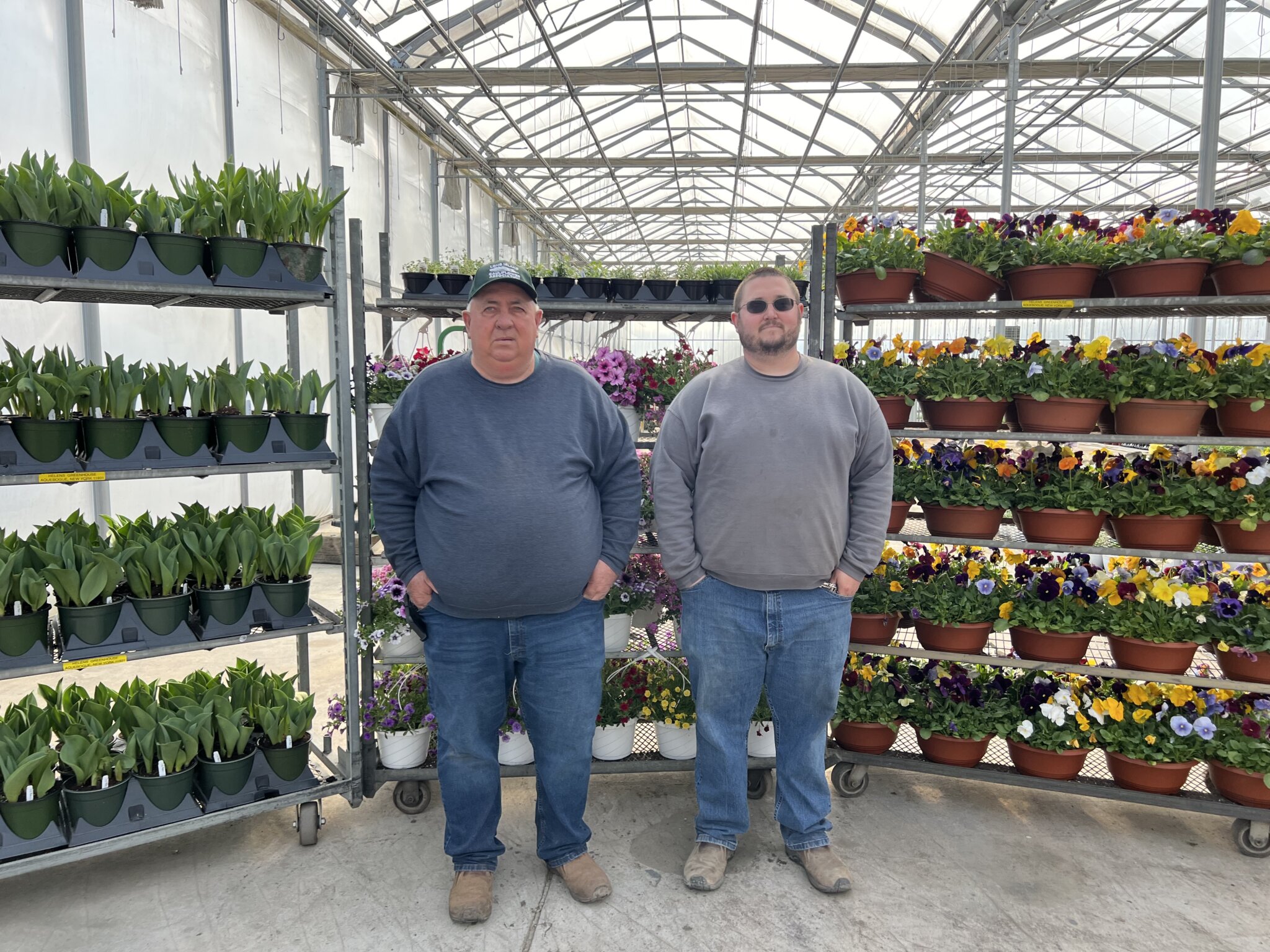The Making of Mother’s Day: A Flower Grower’s Journey with Helen’s Greenhouse & Flower Farm

Michael Anthony McKay, president of Helen’s Greenhouse & Flower Farm in Riverhead, stood surrounded by flowers and future flowers — plants that would bloom, if not on cue, then certainly close. He stared at flowers suspended in the sky (in hanging baskets) and thousands of cuttings in trays that would bloom and burst into color. This is what Mother’s Day looks like a month or two in advance.
“This leads up to Mother’s Day,” McKay said, surveying a green sea of trays filled with tiny plants timed to bloom before the holiday. “It’s almost a whole year cycle.”
Although Mother’s Day may be only one day, it, like most holidays, may seem to begin earlier as the weather warms sooner. For the McKays, the holiday lasts nearly all year.
The McKays and other flower farmers grow in greenhouses all year long to help supply the region’s perennial appetite for colorful flora on Mother’s Day and beyond.
While flowers bring beauty year-round, Mother’s Day is Christmas, New Year’s and July Fourth rolled into one for this industry. 1-800-Flowers says Mother’s Day is its biggest holiday. People are also spending more on Mother’s Day than before — translating into a bigger appetite and a kind of bloom boom.
Mother’s Day with Helen’s Greenhouse & Flower Farm
ALMOST ALL IN THE TIMING
A virtual carpet of green stretches at Helen’s, along with yellow petunias from Central and South America and Africa, white patches of verbena from Central America and a veritable ocean of begonias. Rosemary and lavender are part of the picture.
“It’s complicated. And it’s very time sensitive. The majority of our sales are around Mother’s Day,” Michael John McKay, Michael Anthony’s son, and chief grower, said as he strolled through a greenhouse. “You do months of work, but the majority of it (sales) is all in a six-week period. We grow from December on. Everything has to go in six weeks.”
Consumers last year planned to spend $35.7 billion on Mother’s Day, nearly $4 billion more than the prior year’s $31.7 billion record, according to the National Retail Federation and Prosper Insights & Analytics.
Eighty-four percent of U.S. adults were expected to celebrate the holiday, planning to spend $274.02 per person, up from the previous year record high of $245.76. The most popular gifts (surprise) are flowers: 74% buy flowers, equal to the percent buying greeting cards.
You might think Helen’s primarily buys and grows seeds; however, they typically buy tiny cuttings (tips of plants) without roots from around the world for their four acres of greenhouses.
“In June, July and August, we place orders to get cuttings to come in,” McKay said of orders through brokers. “They take cuttings and send them up here. The soil (or peat moss from peat bogs) is from Canada. The plastic is from China.”
FEEDING FLOWERS
Cuttings without roots typically arrive in the winter from South and Central America, Africa and Israel. Helen’s gets many from El Salvador, Nicaragua and Mexico. Begonia cuttings arrived in January from El Salvador on cargo planes, sometimes sprayed with chemicals so they don’t bloom early, in coolers inspected for drugs, contraband and bugs. Some cuttings receive a rooting hormone to help them grow.
“Some stuff needs heat,” McKay said of cuttings in soil on heated benches, warmed to around 72 degrees by hot water in tubes. “Then you can throw it in a colder greenhouse or outside.”
Flower farmers provide water and light to bring plants to bloom at the right time. “We have main pipes with a dripper,” Michael John said. “Each basket gets an emitter. Each basket gets water.”
Sunlight floods in, along with a touch of artificial light for some plants to feed and time the bloom. “We still need a lot of sunlight,” Michael John continued. “If it’s cloudy and wet outside, there’s a lot of humidity in the greenhouse.”
They sometimes use artificial light to delay blooms in a business where it’s all in the timing, as well as the growing.
“We light them early on so they don’t flower,” Michael John said, noting some plants are sensitive to hours of a certain spectrum of light. “It’s light bulbs that keep the plant from flowering.”
THE FAMILY BUSINESS
Helen’s is a family business. Technically, it’s horticulture, not simply agriculture. Those in this business often see themselves as making the world a better, more beautiful, place.
“I like growing plants. I’ve been in the greenhouse since I was a little kid,” Michael John added. “I kept going along with it. My friends come here and they’re amazed.”
Helen’s primarily sell annuals, such as geraniums, lantana, New Guinea impatiens, scoala, begonia, sunPatiens and many other cuttings that arrive by cargo plane. They also sell some perennials. They offer different-sized hanging baskets ranging from 10 to 18 inches.
Helen’s sells millions of flowers to independent garden centers and landscapers as well as through their own retail. “Everything’s so expensive,” McKay said of rising costs.
Hotter weather, though, is helping save money at greenhouses, which can be kept at 60 degrees. “It’s warmer, so we’re using less fuel,” McKay said. “If you hit the weather right, it starts a little earlier. We used to start selling the last week in April. If the weather’s right, we can sell before the last week of April.”
Flowers at supermarkets and big stores often come from local farms because they are so delicate and ephemeral. “Flowers at supermarkets come from local growers,” McKaysaid. “They’re fresh for one day or two days.”
MORE THAN MOTHER’S DAY
While most flora comes from South and Central America, not all do. Some plants with bulbs such as daffodils, providing a yellow burst for Easter, come from Holland and other regions of Europe.
Presenting the small bulb of a hyacinth, Michael John explained, “They come from Holland. Most Easter lilies, tulips and daffodils come from Holland. Easter used to be more for flowers, but it’s less and less. Mother’s Day for the Northeast is the big holiday.”
Demand for flowers continues to grow year-round, possibly helped by more time spent at home. Helen’s recently built a new, taller greenhouse that captures more air. “It’s easier to maintain heat,” Michael John said of the greenhouse with a higher roof.
After Mother’s Day, Helen’s will go from moms to mums — chrysanthemums — for the fall. The demand for flowers is always in season and greenhouses keep them growing even in unpredictable or inclement weather.
While bigger greenhouses may automate, using robotics, Helen’s still does all their work by hand: planting, moving and otherwise providing a human touch. As Michael John talked, he moved a small plant and its plastic planter from a tray, placing it a few inches from others, demonstrating how they give plants space to grow.
“We line them up on the ground. If you leave it in the tray, there will be a wall. The two plants will grow into each other,” he said. “A lot of plants get spaced. Certain plants don’t need it, but some do.”









